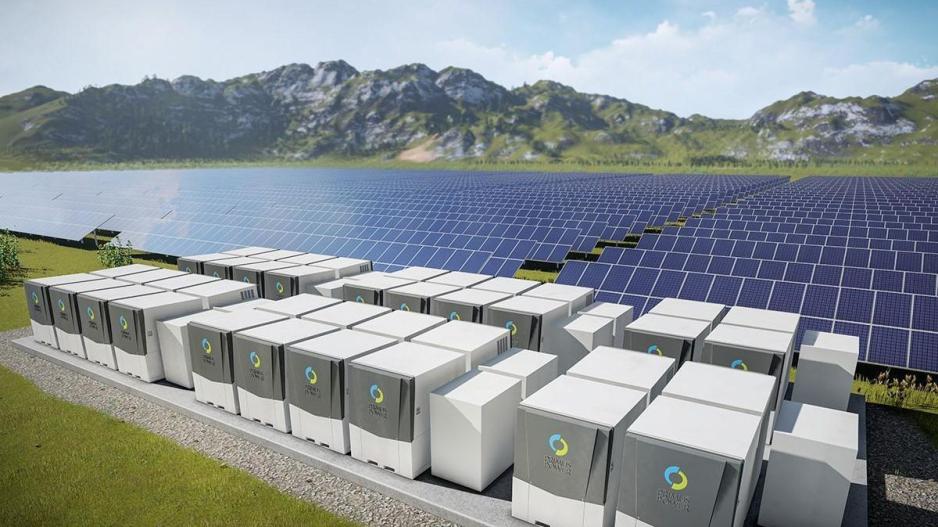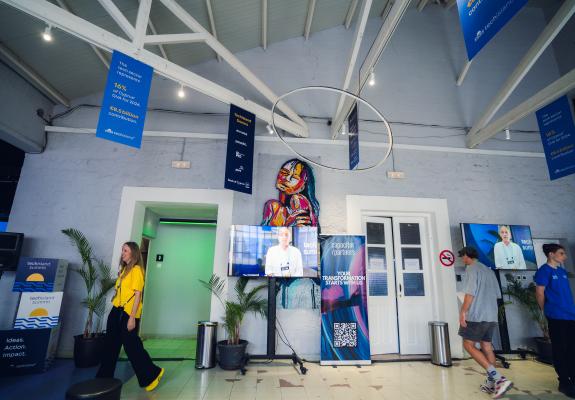Cyprus to Launch First Large-Scale Energy Storage Infrastructure Within 16 Months
Energy Minister outlines fast-track storage projects, grid upgrades, and gas-solar transition plan at Green Agenda Cyprus Summit
Cyprus is set to operate its first large-scale energy storage infrastructure within the next 16 months, announced Energy Minister George Papanastasiou on Monday at the Green Agenda Cyprus Summit in Nicosia.
Papanastasiou emphasized that the absence of storage remains the biggest challenge to integrating renewable energy sources (RES) into the national grid. However, the government is now moving swiftly. The Ministry has already submitted the legal framework to the Transmission System Operator and introduced incentives to promote development.
"The path forward is storage, and the most immediate solution is chemical batteries," the Minister stated.
To address the issue of curtailed RES output, the government is promoting the deployment of storage systems adjacent to production units. The Electricity Authority of Cyprus (EAC) has submitted applications to install battery systems at its Dhekelia and Moni plants, with the goal of becoming operational within 16 months. These installations are expected to reduce energy waste and enhance grid stability.
Additionally, a decree is expected next week allowing the installation of certain storage systems without undergoing lengthy permitting procedures. "This will enable rapid investment and deployment, which we urgently need," Papanastasiou said, stressing the importance of a stable investment environment.
The Minister also highlighted the energy vulnerability of approximately 50,000 Cypriot households—15% of all households—underscoring the need for a sustainable and competitive energy policy, with climate targets as a secondary, though critical, objective.
Papanastasiou echoed recent EU messaging: “No state is an energy island.” He advocated for stronger interconnections and cross-border cooperation, as Europe shifts toward electricity and clean technologies while reducing reliance on oil and gas. By 2035, the EU’s energy mix is projected to consist of 80% renewables, 10% natural gas, and 10% nuclear energy.
However, Cyprus continues to face structural obstacles. “We lack the infrastructure to link production with consumption,” Papanastasiou stated, citing weaknesses in the grid and the need for investment in both storage and interconnection.
Referring to the Great Sea Interconnector project, the Minister called for physical protection of energy infrastructure in light of geopolitical tensions and urged the EU to send a strong message to any actors attempting to obstruct such projects.
Papanastasiou outlined a future scenario in which Cyprus could become a net energy exporter. The country could host up to 2.5 GW of renewable capacity—well above the current 1 GW—but without interconnections, surplus electricity would be lost.
In the near term, Cyprus is pursuing a gas-solar hybrid energy mix, aiming for a gradual shift toward a fully electrified system. “Natural gas is a transitional option, but the future lies in solar energy and interconnections,” he stated, noting that energy security is also at stake.
The Minister warned against replacing dependence on Russian fossil fuels with over-reliance on Chinese-controlled renewable supply chains and rare earth metals used in storage technologies. “Europe must stay committed to electrification if it wants to succeed,” he added.
Discussing natural gas infrastructure, Papanastasiou acknowledged that the long-delayed ETYFA terminal—originally set for completion in 2022—is now expected to be operational in the first half of 2026, with the transition to natural gas projected for late 2026 or early 2027. “We expect electricity prices to decrease at that point,” he said.
The Electricity Authority of Cyprus is also fast-tracking its investments. EAC President George Petrou stated that energy storage systems are expected to be installed within approximately one year, and the utility’s 10-year investment plan is progressing faster than anticipated.
Petrou emphasized that EAC is investing significantly more than in previous years, with the network set to become much more efficient in the near future. He also confirmed that the government aims to reduce carbon emissions by 20–25% by 2030, while the EU targets full green transition by 2050.






